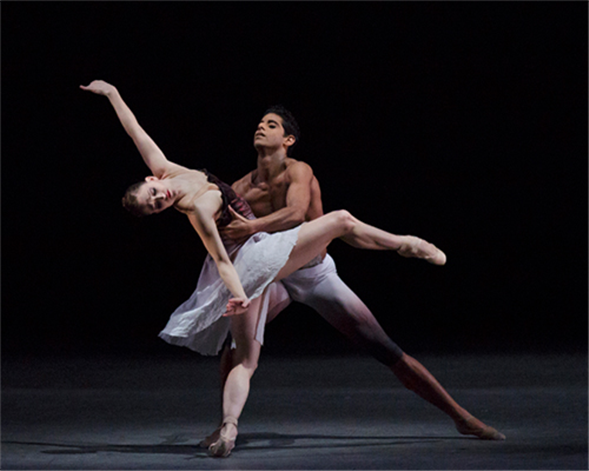Translate Page

New York City Ballet dancers reflect on their co-founder's legacy
---
This week, New York City Ballet opens its spring season with a dozen ballets by 11 different 21st-century choreographers. That's an impressively diverse collection of artists, but the modern focus means that dances by George Balanchine, the company's co-founder, will spend a few days off the roster.
Granted, no one is questioning Balanchine's stature as one of the most important 20th-century choreographers, and NYCB will present a substantial number of his works later in May. But as the company's repertory has diversified in recent decades, one wonders: How do current NYCB dancers view their progenitor's contributions?
For an answer, consider Ashley Bouder and Amar Ramasar. Both are highly contemporary dancers, often chosen by visiting choreographers who create works on the company. However, they are very clear about why they wanted to be part of this troupe.
"The majority of us still come into the company wanting that Balanchine and [Jerome] Robbins repertory," says Bouder, a principal dancer since 2005 and one of NYCB's most fearless technicians. "I think his ballets---and the way we approach them---are very current. Choreographers today are still massively copying that kind of energy and movement, and things that Balanchine invented. I think this company has a very strong sense of its history, so we know how old the ballets are. But then when you dance them, they certainly don't feel old-fashioned at all."
This week, Bouder is dancing in two recent works made for NYCB by two of today's leading ballet choreographers: Namouna by Alexei Ratmansky and Acheron by Liam Scarlett. (The latter is one of 14 ballets in which she's originated a leading role.) But as the six-week season progresses, she'll demonstrate her bravura technique in the wonderfully varied all-Balanchine programs. She rattles off a list of demanding ballerina roles she has taken on in his ballets, describing them as "technical milestones for me." (One of those ballets returning this season is Raymonda Variations, a delectable 1961 work that exemplifies how Balanchine synthesized the classical dance of an earlier era and re-energized it for a new generation.)
For his part, Ramasar, one of the company's most versatile and vivid principal dancers, adds that "Balanchine's choreography still presents immense difficulty, and in my opinion is still extremely contemporary. Balanchine is really in your face, very hard physically---but it also has a sophistication."
Like Bouder, Ramasar has originated many major roles, and on May 8, he'll dance in the highly anticipated premiere of Justin Peck's <i>Everywhere We Go<i>. </i></i>
Nevertheless, he has still distinguished himself with Balanchine's work. He excels in the "leotard ballets"---such as The Four Temperaments, which is in the current repertory---in which the choreographer expanded and manipulated the classical vocabulary to create knotty, intricate, and surprising new imagery. (The sheer range of Balanchine's choreography will be on view this season, which includes two of his most beloved full-length works: the grand and scintillating Jewels and his witty, engaging interpretation of A Midsummer Night's Dream.
"I still believe I'm a Balanchine dancer---one who's learning how to hone some contemporary movement skills," Ramasar says. "All in all, Balanchine is still number one to me---and I think to everybody in the company. We uphold him in the highest place. His works are our 'new choreography' and will always be."
---
Susan Reiter is a freelance arts journalist who contributes to the Los Angeles Times, Playbill, Dance Magazine and other publications
Photo by Paul Kolnik